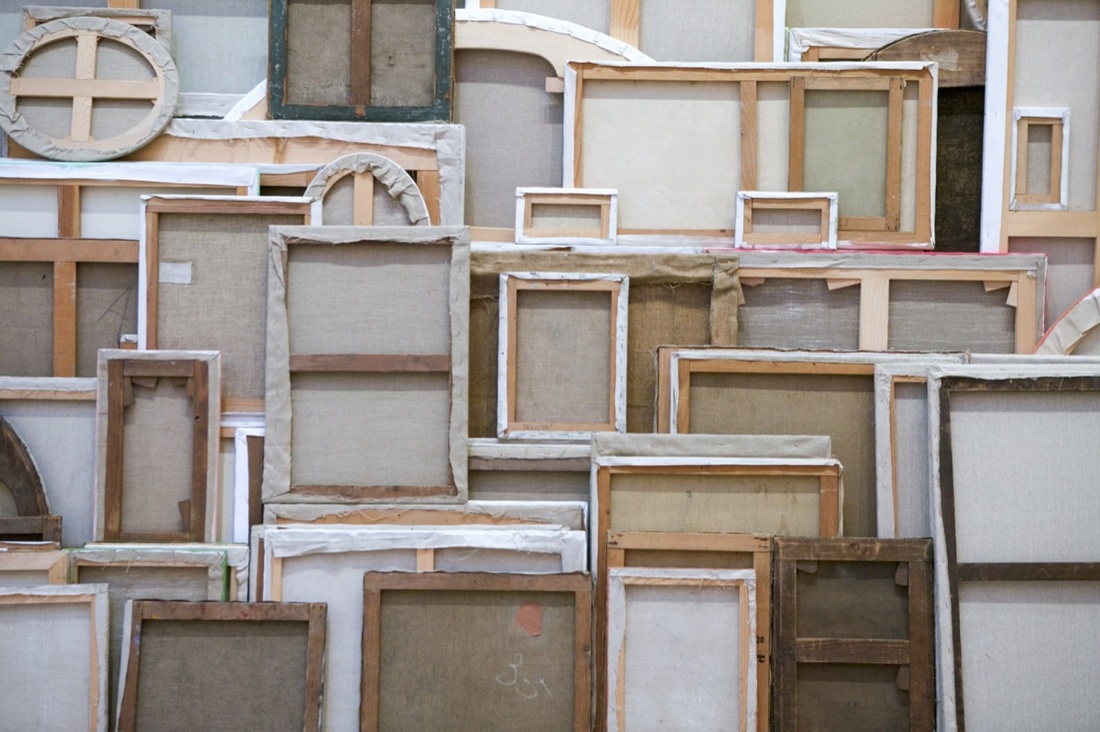In “Art and the Global Economy,” University of San Francisco professor John Zarobell examines “how the art world has blossomed into a global economy in the past generation, and what that means to artists, dealers, curators, cultural administrators, educators, and the public.” Zarobell, an artist and former curator, calls for a deeper questioning into the tendency to measure and justify culture as an economic force, looks at how museums, biennials and fairs are evolving, and asks what the current vogue for “cognitive capitalism” means for the arts and artists themselves. Zarobell also explores less-public aspects of the global art market, what he calls “the art market in the margins.” In the following excerpt, he takes us on a tour of the freeport, and relates it to other frontier elements of the global economy.
Art is one of the most unregulated industries on the planet. Auction houses provide a space for exchange with prices determined in an open public forum, but many aspects of the auction house business are completely hidden from the public and government regulators. They are not required to release the names of their consignors or their bidders and though they make good-faith efforts to provide the most complete provenance for a work of art, they are often forced to accept documentation provided by the owner, and very few provenance records are without lacunae.
Global trading increasingly means that artworks are constantly crossing borders, and every country has a distinct legal framework for regulating the import and export of works of art. Sending works overseas basically means paying customs duties, unless one can find a way to avoid it. In December of 2014, the think tank Global Financial Integrity
released a studyclaiming that capital outflows from the developing world to offshore financial centers totaled $991 billion in 2012.
In our current global art market, many actors are doing just that. Of course, there are the outlandish cases of brazen fraud. A recent one involved in the import of a
Jean-Michel Basquiat painting,
Hannibal, from London to the United States. The customs forms claimed that the artwork inside the crate was worth $100, and therefore was below the value for a duty payment. The painting was actually worth $8 million and was part of an elaborate money laundering scheme set up by a Brazilian embezzler.
But we should not think only of the black market when it comes to averting customs duties, because arbitrage is an important part of the legitimate global economy, and it is used by not only dealers and auction houses but collectors and investors.
In brief, gaming the global legal patchwork is part of effective business practice today, and if Apple and Starbucks use tax avoidance strategies to lessen their fiscal liability, why not sellers and buyers of art?
There are two terms that will help to capture many nuances of the hidden aspects of the global art trade: offshore and informal economy (Editor’s note: This will be the subject of a subsequent excerpt). “Offshore” is a word full of complexities, but it can be summed up as the transfer or exchange of assets beyond regulatory authorities. The informal economy is usually defined as the part of the economy that is unregulated or unrecorded or both. While the off shore metaphor directs one’s attention to the money squirreled away by the wealthiest, studies of the informal economy more often focus on how those at the bottom of the economic pyramid find the means of survival between domains of legality.
At first glance, the global art trade—currently valued at
$57 billion or so—is a miniscule piece of global economic production. But due to the unregulated nature of the art market, it serves a key function within the larger network of the accumulation and distribution of capital worldwide. The art trade can serve as the proverbial canary in the coal mine. Examining offshore economic activity will, paradoxically, allow the reader to locate some of the hidden mechanisms that allow the global art market to flourish.
Freeports: From Grain to van Gogh
In nineteenth-century Switzerland, an innovation emerged that would eventually serve the art industry very effectively, and today as a result there are “freeports”—extremely secure storage facilities “off shore” where valuable commodities can be kept with the utmost discretion and no one can enter without an appointment—all around the world. Moreover, of course, there are also many art works stored in bank vaults.
A freeport is a storage facility that exists formally outside of the territorial jurisdiction of any country, though recent scandals have required the government of Switzerland to seize control of the Geneva Freeport, for example.
This facility was originally created in 1888 to store grain and other agricultural products in transit. The essential aspect of the freeport is “the temporary exemption of taxes for an unlimited quantity of time,” as journalist David Segal
has written.
While one cannot store grain for an unlimited period, more valuable commodities such as art and wine, to say nothing of gold bars, could be stored much longer. In the era of offshore expansion in the late twentieth century, tax loopholes and secrecy domains acquired a much greater significance in the global economy, and for art, the freeport became the physical equivalent of a Swiss bank account. Invisible to tax authorities, foreign governments, and even the insurers of the art works themselves, art could be stored there with complete anonymity and sold without any taxes being paid.
The implications are staggering. The Economist has
compared the size of the Geneva freeport to twenty-two soccer pitches, and Segal reported that a new 130,000-square-foot warehouse was being built there. In Switzerland, there is another large freeport in Zurich, which is also expanding internationally. Luxembourg was building a 215,000-square-foot freeport in 2012, and the Singapore freeport was reported to be undergoing expansion at the time. A new one was planned (and has since been built) in Beijing, near the airport. The newest freeport opened in Delaware in 2015. According to The Economist, the freeports in Geneva and Zurich are each “believed to hold well over $10 billion worth of paintings, sculpture, gold, carpets, and other items.” Such an estimate is an obvious shot in the dark, but it is the best anyone is likely to get, given the secrecy of these zones. Nothing is on view, of course, Segal writes, but one can see empty crates and frames scattered in the hallways outside of the storage areas. If the consignor is leaving the frames in the hallway, one might imagine that the space is too full of paintings for the frames to fit. This is an insurer’s nightmare.
On the other hand, it might just be an investor’s dream. To hold valuable works of art tax-free means that the foundations for speculative ventures are firmly in place. The freeports in Luxembourg, Monaco, and Singapore are all held by one company, Natural Le Coultre, owned by Yves Bouvier. This fact came to the attention of the media in 2015, when Bouvier was accused by a Russian oligarch, Dmitry Rybolovlev, of cheating him in the sale of a
Picasso painting through double-invoicing, and Bouvier was formally accused of fraud and complicity in money laundering by the authorities in Monaco.
Freeports as “Special Economic Zones”
It is difficult to imagine a reason to keep art works in a freeport unless there is speculation going on. If you are collector of fine art, you want to be able to see and to appreciate what you own. But if you are a speculator, all you need is private and secure storage, since you are betting that the work is going to increase in value. So the freeport is the perfect place to park your speculative art purchases, because they cannot be traced to you and no government can tax you on these assets.
Of course if you want to corner the market on the work of a certain artist and wait for it to escalate in value, the freeport is your best bet. Everyone in the art world has heard stories of exhibitions of young contemporary artists being bought out by enterprising collectors; Charles Saatchi’s early purchases of works by
Damien Hirst and his clique of
YBAs is one of the most famous examples. Such works had to be stored somewhere, and the freeport is the most secretive place to do so, with the advantage that if the work changes hands there, no sales tax needs to be paid either. It could be argued that this is all anecdotal, but opportunities are being seized and growth is expected: “28% of both the art collectors and art professionals surveyed said they had already used or had a relationship with a freeport provider, and 43% of the art professionals said that their clients were likely to use a freeport facility in the future, versus 42% of the art collectors who said they were likely to use such a facility,” according to Deloitte and ArtTactic.
As an off shore mechanism, the freeport is an expansion of the concept of free trade that, despite its name, actually tends to benefit the most privileged investors at the expense of others. This is especially visible in the development of the global economic system in the second half of the twentieth century. At this moment in history, as countries were throwing off their colonial shackles and attempting to compete in the increasingly globalized world of trade, one of the main limitations was that colonial economies were largely dependent on raw materials and cash crops and therefore, after independence came, many countries struggled with the challenge of economic independence. The biggest success stories of these years were a group of mostly small Asian countries known as the Asian Tigers, which transformed their economies through export orientation, in effect, creating, packing, and shipping what consumers in wealthier nations wanted. Singapore, Taiwan, Korea, and Hong Kong created strong economies partially through opening tax-free zones, called export processing zones, special economic zones (SEZs), or other euphemisms for providing services tax-free in certain areas in order to lure foreign direct investment from multinational corporations.
This trend has accelerated globally in the twenty-first century and has created political backlashes around the world. The burgeoning string of freeports around the world is an echo of the SEZs, demonstrating that many countries are expanding their tax-free services not just to manufacturers but to investors in luxury goods. These duty-free zones are often placed at airports to facilitate the acquisition and storage of vast quantities of luxury goods that wealthy investors do not have to pay tax on. These spaces, outside of the jurisdiction of any national regulatory body, allow art to be securitized and moved off shore, and their operations parallel in many ways the offshore financial transactions that have grown so numerous in the past decades.
Freeports as secrecy jurisdictions
The first characteristic freeports share is the concept of “secrecy jurisdictions”. In his expansive account of the development of
the offshore financial world, journalist Nicholas Shaxson underlines how certain countries, beginning with Switzerland, have regulated financial secrecy as a means to ensure the discretion of the banking industry and protect assets held in these countries from external regulatory mechanisms. This does not mean, of course, that all money in Swiss (or Cayman) banks amounts to ill-gotten gains, but it does mean that no one can ever find out whether it does or not.
The Panama Papers leak of 2016 led to many revelations about the use of secrecy jurisdictions by prominent businessmen, politicians, athletes, and art world insiders. A number of articles spelled out how dealers like the Nahmad family and collectors such as Joseph Lewis and Diana Ruiz-Picasso used offshore companies to secret away art and money that could not be traced to them due to the structure of these off shore mechanisms. What is noteworthy in retrospect is that these revelations have not shown that laws were broken, nor have they exposed a complete picture of how offshore mechanisms have altered the art market.
The same is true of what is known about freeports. No one can tell if the art held in them was stolen, bought with drug money, or simply a prudent investment expected to yield great returns in time. The secrecy of freeports, combined with offshore corporate entities and the unregulated nature of the art market, means that it is very difficult to connect owners with works of art that are stored in a freeport. No government can regulate, tax, or investigate property stored inside a secrecy jurisdiction, and so, for all intents and purposes, the art in freeports becomes invisible.
This secrecy and lack of regulation are a kind of loophole in the regulation of the global economic system and international law. If you are a national government, you can charge excise tax on works of art leaving the country and traveling to another, and based on the rate you set, it is possible either to incentivize the export of works of art or to provide barriers to their export.
But to put a work of art into a freeport is not exporting it, in legal terms, because it is not entering another country. So no duties need to be paid and no laws are actually broken. Such a loophole is an inducement to arbitrage; it actually suggests to an individual how he or she can skirt the law and get away with it. Tax avoidance is the reason offshore financial centers exist, and this also true of freeports. By generating the means to avoid duties in a quasi-legal framework, it becomes very difficult indeed to enforce national laws. Individuals and corporations can game the system to ensure that their interests are served best.
—John Zarobell
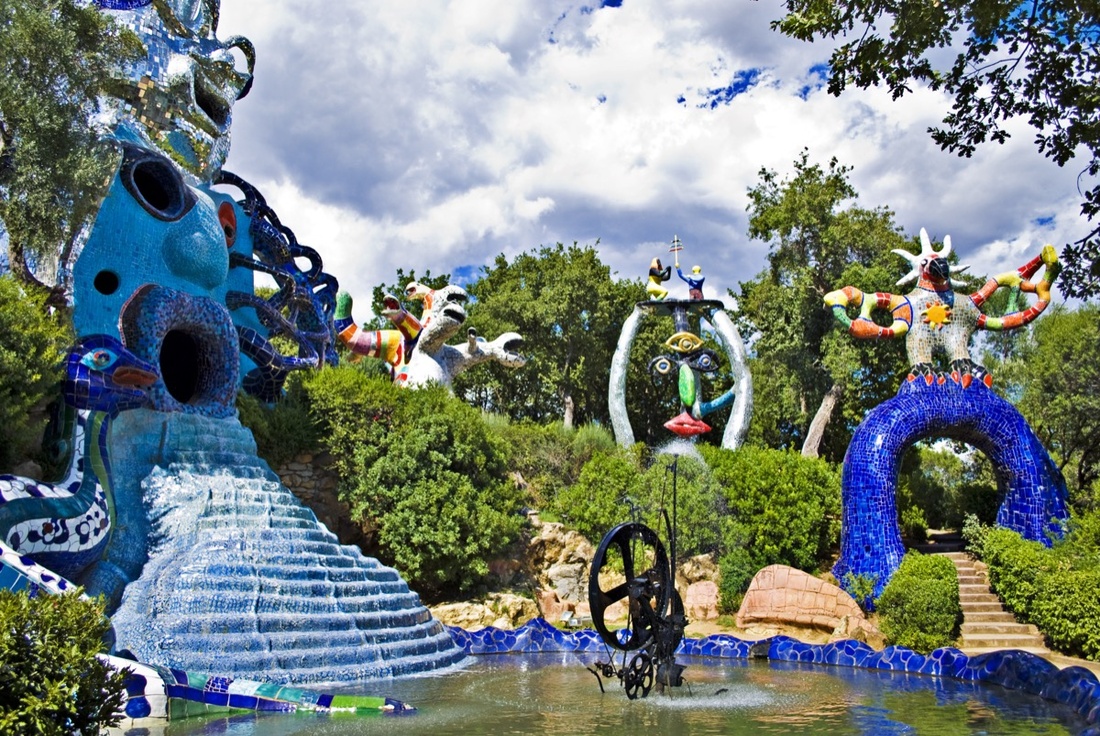 Niki de Saint Phalle, The Tarot Garden, Tuscany, Italy. Image via Wikimedia Commons.
Niki de Saint Phalle, The Tarot Garden, Tuscany, Italy. Image via Wikimedia Commons.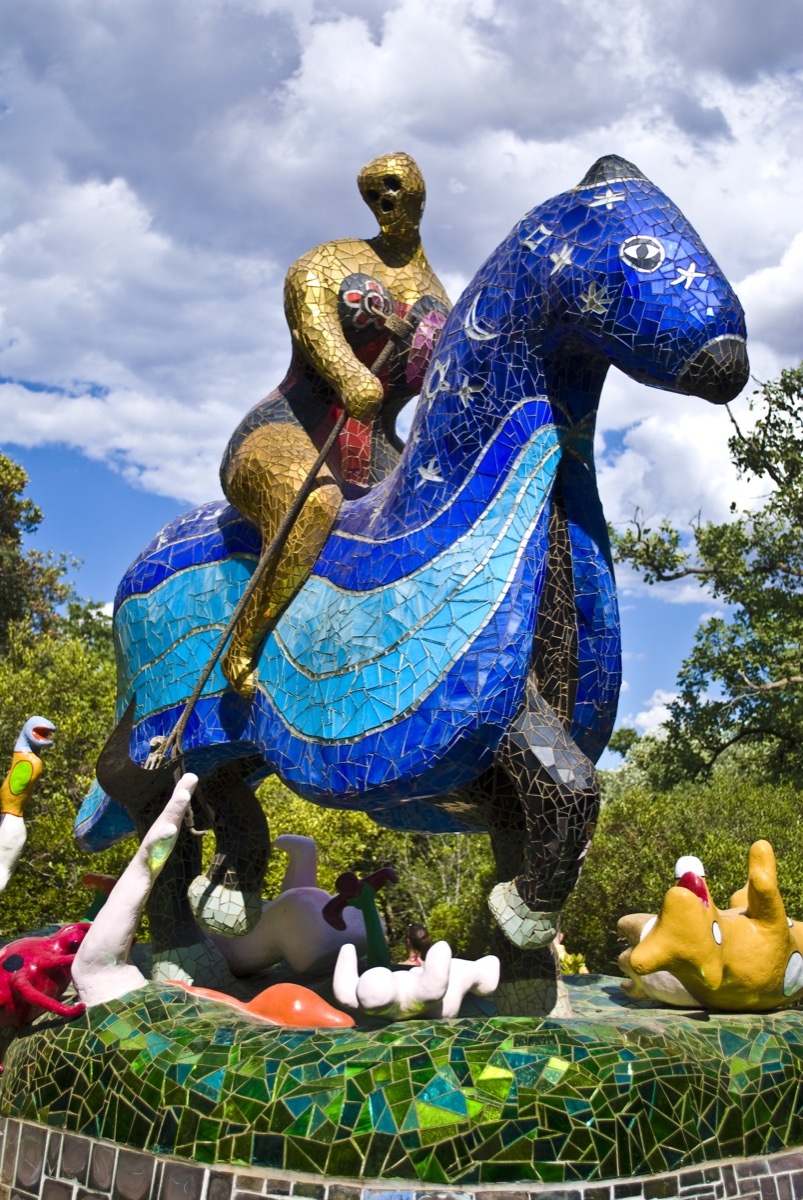 Niki de Saint Phalle, The Tarot Garden, Tuscany, Italy. Photo by Alessandro Bonvini, via Flickr.
Niki de Saint Phalle, The Tarot Garden, Tuscany, Italy. Photo by Alessandro Bonvini, via Flickr.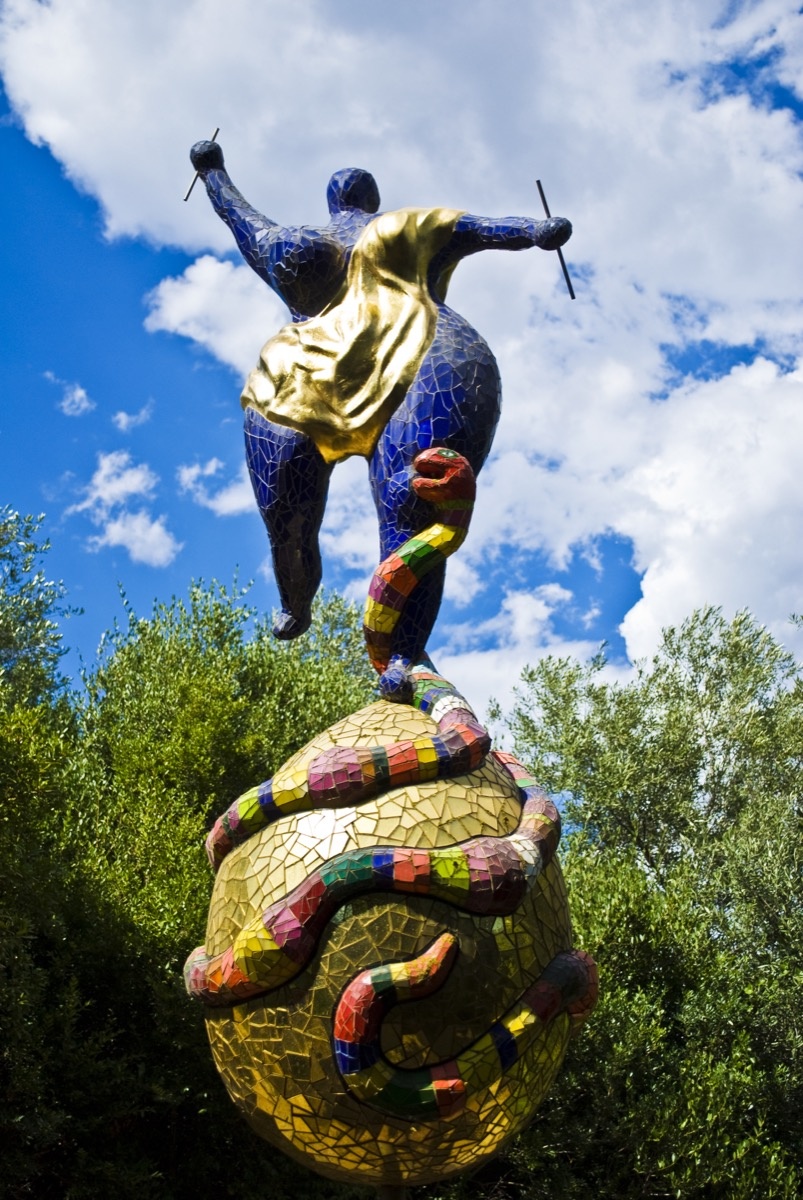 Niki de Saint Phalle, The Tarot Garden, Tuscany, Italy. Photo by Alessandro Bonvini, via Flickr.
Niki de Saint Phalle, The Tarot Garden, Tuscany, Italy. Photo by Alessandro Bonvini, via Flickr. Niki de Saint Phalle, The Tarot Garden, Tuscany, Italy. Photo by Alessandro Bonvini, via Flickr.
Niki de Saint Phalle, The Tarot Garden, Tuscany, Italy. Photo by Alessandro Bonvini, via Flickr.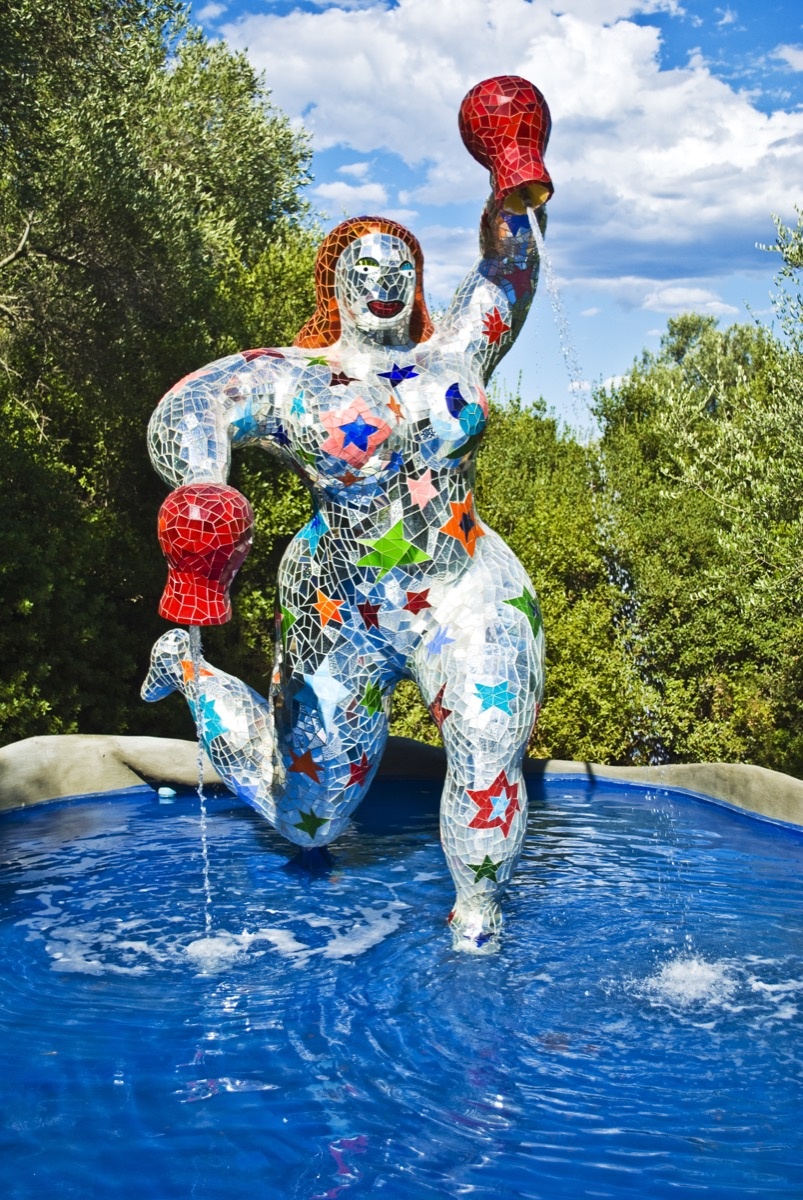 Niki de Saint Phalle, The Tarot Garden, Tuscany, Italy. Photo by Alessandro Bonvini, via Flickr.
Niki de Saint Phalle, The Tarot Garden, Tuscany, Italy. Photo by Alessandro Bonvini, via Flickr.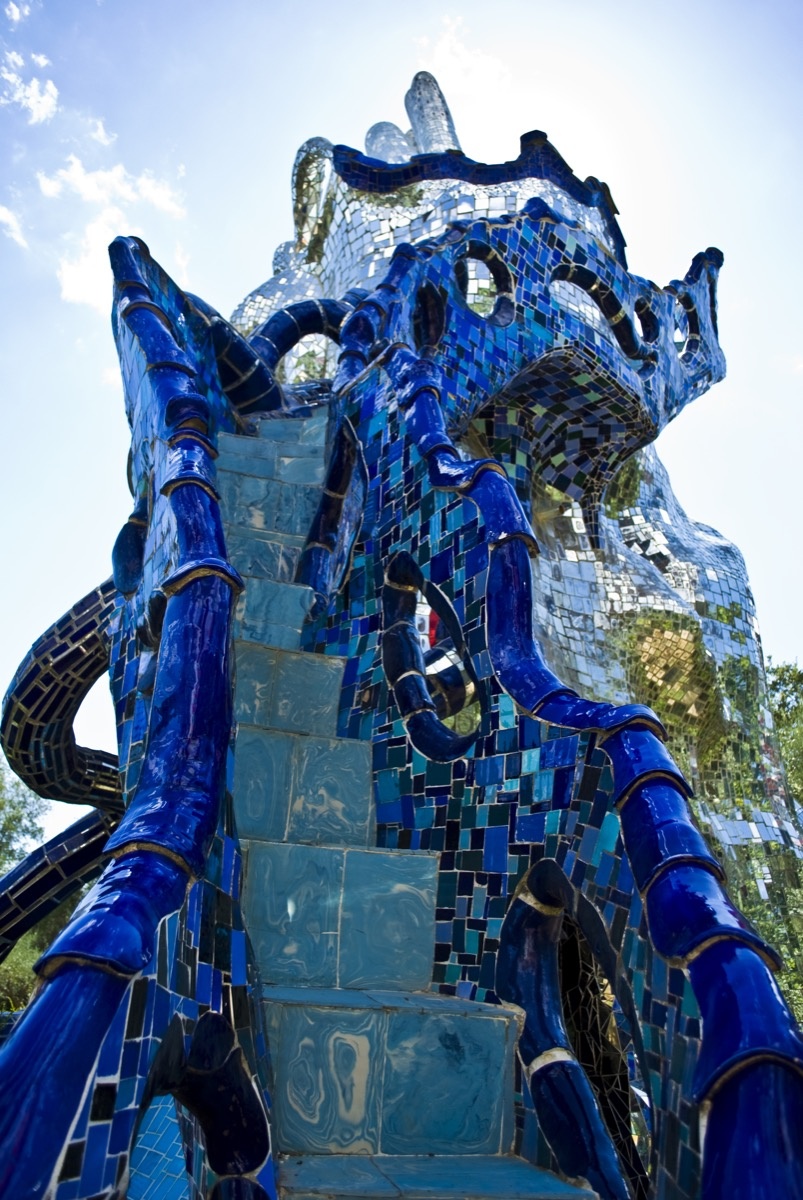 Niki de Saint Phalle, The Tarot Garden, Tuscany, Italy. Photo by Alessandro Bonvini, via Flickr.
Niki de Saint Phalle, The Tarot Garden, Tuscany, Italy. Photo by Alessandro Bonvini, via Flickr.
